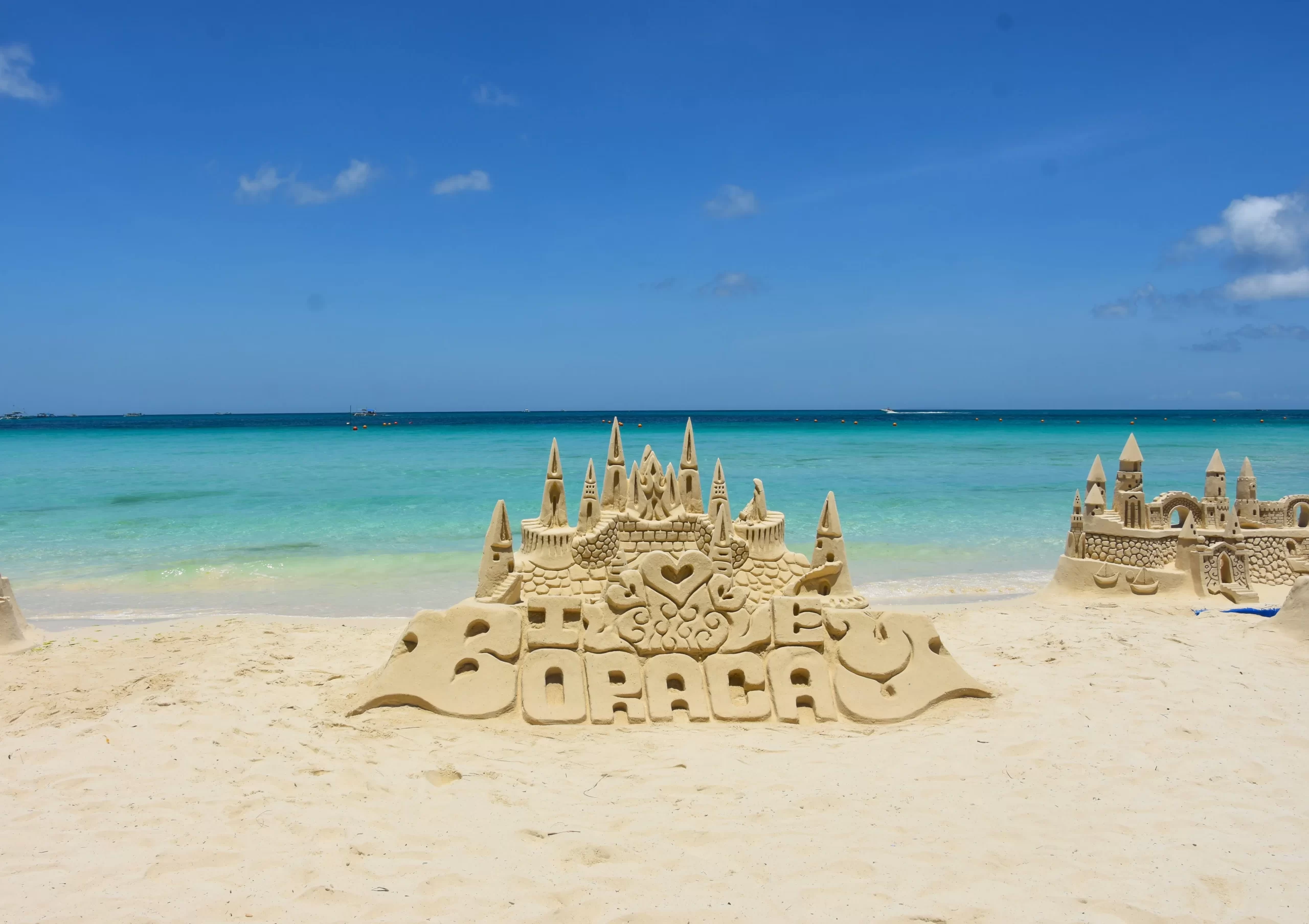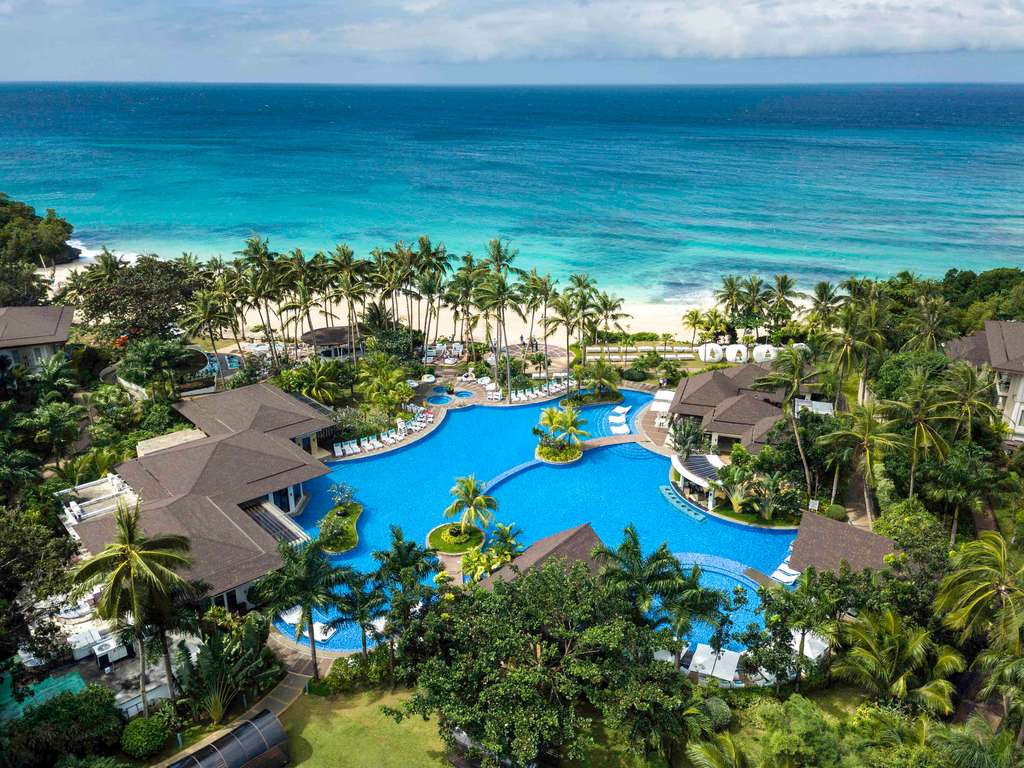



Boracay is a small island in the central Philippines. It's known for its resorts and beaches. Along the west coast, White Beach is backed by palm trees, bars and restaurants. On the east coast, strong winds make Bulabog Beach a hub for water sports. Nearby, the observation deck on Mount Luho offers panoramic views over the island. Offshore, coral reefs and shipwrecks are home to diverse marine life. ― Google
Area: 10.32 km²
Barangays: Balabag; Manoc-Manoc; Yapak
Coordinates: 11°58′8″N 121°55′26″E / 11.96889°N 121.92389°E
Ethnic groups: Ati; Aklanon; Hiligaynon; Karay-a
Highest elevation: 302 ft (92 m)
Highest point: Mount Luho
Largest settlement: Manoc-Manoc (pop. 14,810)
November to April:
The dry season, offering the best weather for beach activities, water sports, and outdoor exploration. It’s also the peak season for tourists, so expect more crowds, especially around Christmas, New Year, and Holy Week.
Best for: Beach relaxation, water activities, and events.
May to October:
The rainy season in Boracay, with occasional typhoons. While it's quieter and less crowded, there’s still a chance for sunny days. Rates may be cheaper, and the island is generally more peaceful.
Best for: Budget travelers, quieter experiences.
By Air:
You can reach Boracay via Caticlan Airport (Godofredo P. Ramos Airport), which is the nearest airport to the island, located around a 10-minute boat ride from the Caticlan jetty port.
Flights to Caticlan are available from major Philippine cities like Manila and Cebu.
Alternatively, you can fly to Kalibo International Airport, located 1.5 to 2 hours away from Boracay, and then take a bus to Caticlan followed by a boat ride to Boracay.
By Sea:
For those already in the Philippines, there are ferry services from nearby islands like Cebu, Manila, and Negros. You would need to get to Caticlan port and take a boat to the island.
By Land and Boat:
After reaching Caticlan Jetty Port, take a short boat ride (10-15 minutes) to reach Boracay Island.
One of the most famous beaches in the world, White Beach is known for its powdery white sand and crystal-clear water. It's divided into three stations:
Station 1: For a quieter experience, with upscale resorts and restaurants.
Station 2: The center of activity, featuring shops, eateries, and nightlife.
Station 3: Offers a more relaxed vibe with affordable accommodations and less crowded areas.
A more secluded beach, known for its unique Puka shells, and a quieter alternative to White Beach. It’s perfect for a peaceful retreat, swimming, and enjoying nature.
A small and serene beach located just a short walk from White Beach. It’s a less crowded spot with beautiful views, ideal for a more private experience.
The highest point on Boracay, providing panoramic views of the island, the sea, and nearby islands. It's perfect for a scenic photo opportunity and a peaceful retreat away from the beach crowds.
A private island located just off the coast of Boracay, famous for its caves, crystal-clear waters, and diverse marine life. It's great for snorkeling, diving, and relaxing.
A popular natural formation located at Station 1, Willy's Rock is an iconic rock formation that rises above the water. It’s an excellent spot for photo ops, especially during sunset.
Island Hopping: Explore nearby islands like Crystal Cove Island, Crocodile Island, and Puka Beach for secluded beaches, snorkeling, and more.
Water Sports: Boracay is a haven for water activities, including kite surfing, windsurfing, jet skiing, parasailing, and snorkeling. The island is known for its calm, clear waters, perfect for water sports enthusiasts.
Snorkeling and Diving: Boracay offers some of the best snorkeling and diving spots, especially around Crocodile Island and Sulu Sea. Dive shops on the island offer lessons and guided dives.
Sunset Viewing: Enjoy one of the most spectacular sunsets in the world from White Beach or Diniwid Beach. The views are truly breathtaking.
Bora Party Scene: Boracay is famous for its vibrant nightlife. Enjoy beach bars, live music, and a lively atmosphere, especially in Station 2.
Stand-up Paddleboarding: Rent a paddleboard and enjoy the calm waters of Boracay, a relaxing way to explore the coastline.
Helmet Diving: For an underwater experience without getting your hair wet, try helmet diving, where you can walk on the ocean floor and interact with marine life.
Luxury:
Shangri-La's Boracay Resort and Spa: A luxurious, private resort located on Punta Bunga Beach, offering top-notch amenities, overwater villas, and stunning views.
Discovery Shores Boracay: A beachfront resort known for its high-end services, spacious suites, and excellent dining options.
Mid-range:
The Lind Boracay: A modern and stylish hotel offering contemporary facilities, a beach-front location, and amazing views of White Beach.
Boracay Mandarin Island Hotel: A comfortable, beachfront hotel with great service and proximity to restaurants and bars.
Budget:
Cebu Guest House: A budget-friendly option located near Station 2, offering simple rooms and a friendly atmosphere.
Frendz Resort Boracay: A popular budget resort offering dormitory beds and affordable rooms, great for backpackers and solo travelers.
Must-try dishes:
Laing: A Filipino dish made from taro leaves cooked in coconut milk, often served with fish or pork.
Sinigang: A tangy soup, usually made with pork, shrimp, or fish, flavored with tamarind and served with rice.
Kaldereta: A rich beef stew cooked with tomatoes, carrots, and potatoes. It’s a comfort food staple in the Philippines.
Fresh Seafood: Boracay has many seaside restaurants that offer freshly caught seafood, including prawns, crabs, and grilled fish.
Top dining spots:
D’Talipapa: A seafood market and eatery where you can choose fresh seafood and have it cooked to order at nearby restaurants.
Cha Cha’s: A beachfront restaurant that serves a fusion of local and international dishes with stunning views of White Beach.
The Pig & Palm: A trendy and modern dining spot offering a mix of local and Western dishes, perfect for a more upscale experience.
Aloha Boracay: A cozy beachfront café that serves delicious snacks, drinks, and fresh seafood, with a laid-back vibe.
Cultural Heritage: Boracay is not just about its beaches—there’s also a rich local culture to explore. The Aklanons, the indigenous people of the region, have a deep connection to the land and the sea, and their culture is reflected in Boracay's traditions and festivals.
Sinigang Festival: Boracay's version of a local festival celebrating the flavors of Aklan and the province’s rich culinary heritage. It’s a great way to experience Filipino culture.
Community and Sustainability: Boracay has taken steps to address sustainability, with local government and businesses pushing for eco-friendly initiatives. Boracay was temporarily closed to tourists in 2018 for a major environmental cleanup, and today the island focuses on sustainable tourism and preserving its natural beauty.
Hospitality: Filipino hospitality is renowned, and the people of Boracay are incredibly friendly and welcoming, ensuring that every visitor has a memorable stay.